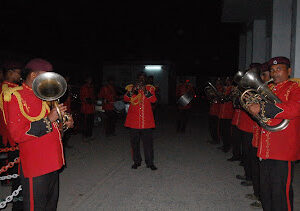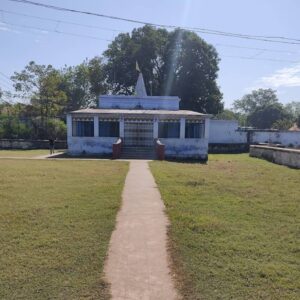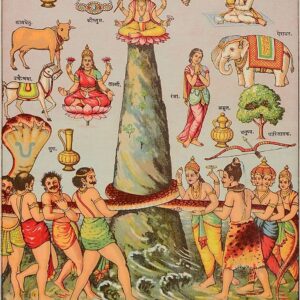Kayastha (also referred to as Kayasth) denotes a cluster of disparate Indian communities broadly categorised by the regions of the Indian subcontinent in which they were traditionally located—the Chitraguptavanshi Kayasthas of North India, the Chandraseniya Kayastha Prabhus of Maharashtra, the Bengali Kayasthas of Bengal and Karanas of Odisha. All of them were traditionally considered “writing castes”, who had historically served the ruling powers as administrators, ministers and record-keepers.
The earliest known reference to the term Kayastha dates back to the Kushan Empire, when it evolved into a common name for a writer or scribe. In the Sanskrit literature and inscriptions, it was used to denote the holders of a particular category of offices in the government service. In this context, the term possibly derived from kaya- (‘principal, capital, treasury’) and -stha (‘to stay’) and perhaps originally stood for an officer of the royal treasury, or revenue department.
Over the centuries, the occupational histories of Kayastha communities largely revolved around scribal services. However, these scribes did not simply take dictation but acted in the range of capacities better indicated by the term “secretary”. They used their training in law, literature, court language, accounting, litigation and many other areas to fulfill responsibilities in all these venues. Kayasthas, along with Brahmins, had access to formal education as well as their own system of teaching administration, including accountancy, in the early-medieval India.
Modern scholars list them among Indian communities that were traditionally described as “urban-oriented”, “upper caste” and part of the “well-educated” pan-Indian elite, alongside Punjabi Khatris, Kashmiri Pandits, Parsis, Nagar Brahmins of Gujarat, Bengali Bhadraloks, Chitpawans and Chandraseniya Kayastha Prabhus (CKPs) of Maharashtra, South-Indian Brahmins including Deshastha Brahmins from Southern parts of India and upper echelons of the Muslim as well as Christian communities that made up the middle class at the time of Indian independence in 1947.
History
From classical to early-medieval India
The Kayasthas, at least as an office, played an important role in administering the Northern India from the Gupta period. The earliest evidence comes from a Mathura inscription of Vasudeva I, composed by a Kayastha Śramaṇa. From this point we find, the term kayastha occurring in the inscription of the Gupta Emperor Kumaragupta I as prathama-kāyastha, as karaṇa-kāyastha in Vainayagupta’s inscription, and as gauḍa-kāyastha in an Apshadha inscription dated 672 CE.: 104 The occasional references to individuals of the Karaṇa caste occupying high government offices are made in inscriptions and literary works too. Razia Banu has suggested that Brahmin and Kayastha migrants were brought to Bengal during the reign of the Gupta Empire to help manage the state affairs.: 5–6 According to a legend, a Bengali King named Adisur had invited Brahmins accompanied by Kayasthas from Kannauj who became an elite sub-group described as Kulin. However, such claims are disputable and even rejected by some scholars.
From the ninth-century and perhaps even earlier, Kayasthas had started to consolidate into a distinct caste. This is evident from a epigraphic record dated 871 CE of the King Amoghavarsha that mentions a branch of Kayasthas referred to as vālabhya-kāyastha. The author of the Sanskrit work Udayasundarī-kathā also referred to himself as vālabhya-kayāstha and characterized Kayasthas as ‘ornaments of the Kṣatriyas’.
In Soḍḍhala’s account
According to Soḍḍhala, who claimed to be a Kayastha himself, Kayasthas traced their descent to a younger brother of the Maitrika king, identified as Śilāditya VI or VII, referred to as Kalāditya. He narrates that Kalāditya had besieged Dharmapala of the Pala Dynasty that led to the victory of his elder brother. Subsequently, he was entrusted by Śilāditya to administer his kingdom at the advice of the Goddess Rāja Lakśmī. Kalāditya has been further described as an incarnation of a gaṇa (transl. ’attendant’) of Shiva called Kayastha.
In Sanskrit literature
The Mitākṣarā refers to Kayasthas as accountants and scribes, they are described as favorites of the king and cunning.
The Kayastha appears as a figure in Act IX of the Mṛcchakatika, a kāyastha is shown accompanying a judge (adhikaraṇika) and assisting him. In Act V there is mention that:
Moreover, O friend, a courtesan, an elephant, a Kayastha, a mendicant, a spy and a donkey—where these dwell, there not even villains can flourish.
In Mudrarakshasa, a Kayastha named Śakaṭadāsa is a crucial character and one of the trusted men of the Prime Minister of the Nanda King. According to Chitrarekha Gupta, the title Ārya added to the name of Śakaṭadāsa implies that he was a member of the nobility. Another Kayastha called Acala is the scribe of Chanakya.
In early-mediaeval Kashmir too, the term kayastha denoted an occupational class whose principal duty, besides carrying on the general administration of the state, consisted in the collection of revenue and taxes. Kshemendra’s Narmamālā composed during the reign of Ananta (1028-1063 CE) gives a list of contemporary Kayastha officers that included Gṛhakṛtyadhipati, Paripālaka, Mārgapati, Gañja-divira, Āsthāna-divira, Nagara-divira, Lekhakopādhya and Niyogi. Kalhana’s Rājataraṃgiṇī (‘The River of Kings’) and Bilhana’s Vikramāṅkadevacarita (‘Life of King Vikramaditya’) also mention Kayasthas. It is also mentioned that father of Lalitaditya Muktapida of the Karkota Dynasty, Durlabhavardhan, had held the post of Aśvaghāsa-kāyastha.
Kayasthas have been authors of several Sanskrit texts too.
Some important Sanskrit works authored by the Kayasthas
| Work(s) | Genre(s) | Author | Author’s lineage | Date |
| Rāmacarita | Biography | Sandhyākaranandin | Karana | 12th c. |
| Udayasundarī Kathā | Champu | Soḍḍhala | Vālabhya | 11th c. |
| Rasa Saṅketa Kalikā, Varṇanighaṇṭu | Medicine, Tantra | Kāyastha Cāmuṇḍa | Naigama | 15th c. |
| Kṛtyakalpataru | Administration | Lakṣmīdhara | Vāstavya | 12th c. |
In Brahmanical literature
Kayasthas have been recorded as a separate caste responsible for writing secular documents and maintaining records in Brahmanical religious writings dating back to the seventh-century. In these texts, some described Kayasthas as Kshatriyas, while others often described them as a ‘mixed-origin’ caste with Brahmin and Shudra components. This was probably an attempt by the Brahmins to rationalize their rank in the traditional caste hierarchy and perhaps a later invention rather than a historical fact.
Late medieval India
After the Muslim conquest of India, they mastered Persian, which became the official language of the Mughal courts.Some converted to Islam and formed the Muslim Kayasth community in northern India.
Bengali Kayasthas had been the dominant landholding caste prior to the Muslim conquest, and continued this role under Muslim rule. Indeed, Muslim rulers had from a very early time confirmed the Kayasthas in their ancient role as landholders and political intermediaries.
Bengali Kayasthas served as treasury officials and wazirs (government ministers) under Mughal rule. Political scientist U. A. B. Razia Akter Banu writes that, partly because of Muslim sultans’ satisfaction with them as technocrats, many Bengali Kayasthas in the administration became zamindars and jagirdars. According to Abu al-Fazl, most of the Hindu zamindars in Bengal were Kayasthas.
Maharaja Pratapaditya, the king of Jessore who declared independence from Mughal rule in the early 17th century, was a Bengali Kayastha.
British India
During the British Raj, Kayasthas continued to proliferate in public administration, qualifying for the highest executive and judicial offices open to Indians.
Bengali Kayasthas took on the role occupied by merchant castes in other parts of India and profited from business contacts with the British. In 1911, for example, Bengali Kayasthas and Bengali Brahmins owned 40% of all the Indian-owned mills, mines and factories in Bengal.
Modern India
The Chitraguptavanshi Kayasthas, Bengali Kayasthas and CKPs were among the Indian communities in 1947, at the time of Indian independence, that constituted the middle class and were traditionally “urban and professional” (following professions like doctors, lawyers, teachers, engineers, etc.) According to P. K. Varma, “education was a common thread that bound together this pan Indian elite” and almost all the members of these communities could read and write English and were educated beyond school.
The Kayasthas today mostly inhabit central, eastern, northern India, and particularly Bengal. They are considered a Forward Caste, as they do not qualify for any of the reservation benefits allotted to Scheduled Castes and Scheduled Tribes and Other Backward Classes that are administered by the Government of India. This classification has increasingly led to feelings of unease and resentment among the Kayasthas, who believe that the communities that benefit from reservation are gaining political power and employment opportunities at their expense. Thus, particularly since the 1990 report of the Mandal Commission on reservation, Kayastha organisations have been active in areas such as Bihar, Madhya Pradesh, Bengal and Orissa. These groups are aligning themselves with various political parties to gain political and economic advantages; by 2009 they were demanding 33 percent reservation in government jobs.














Reviews
There are no reviews yet